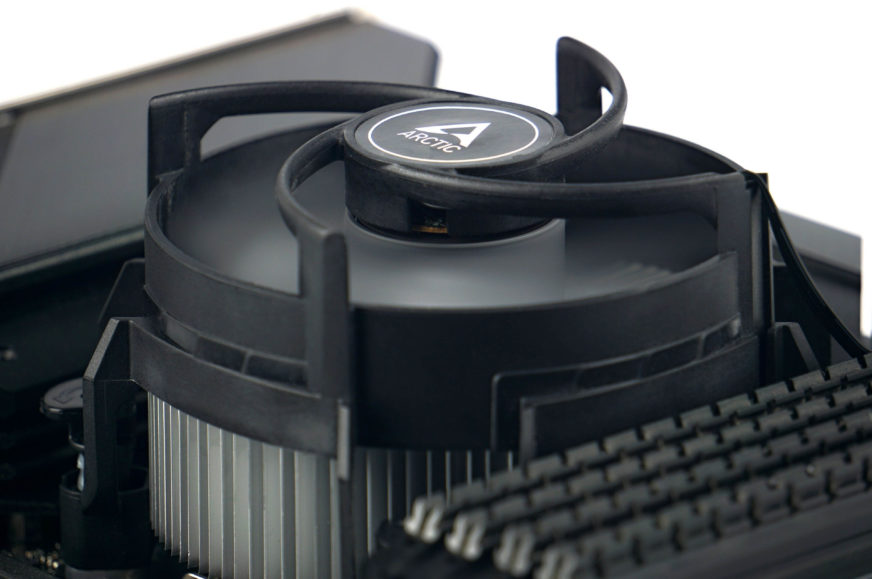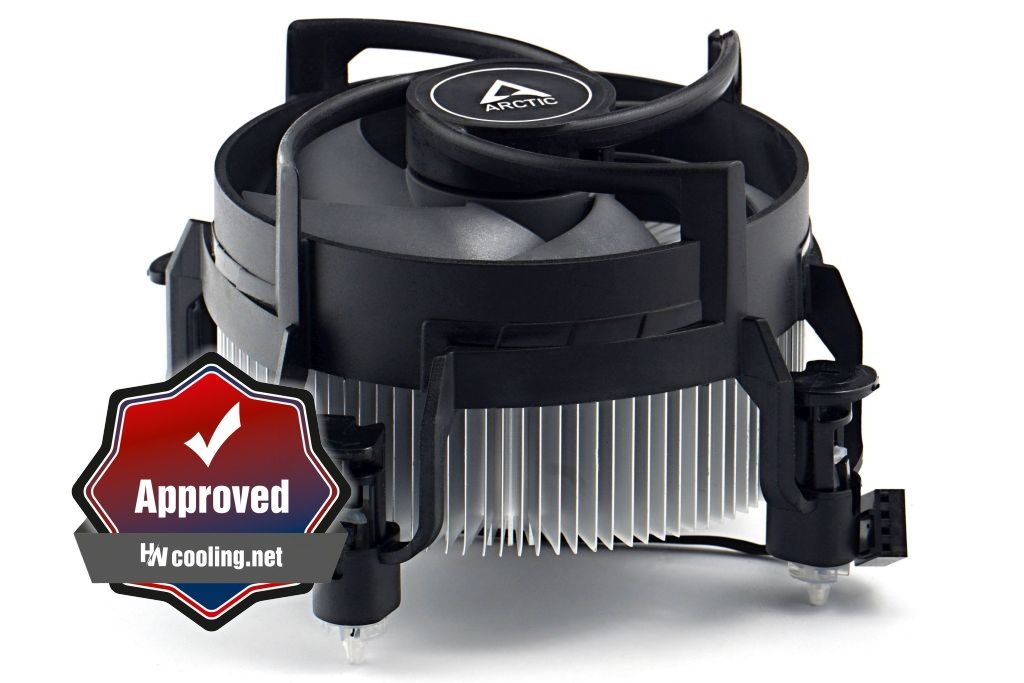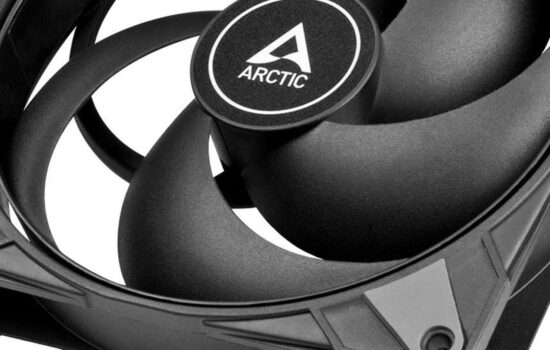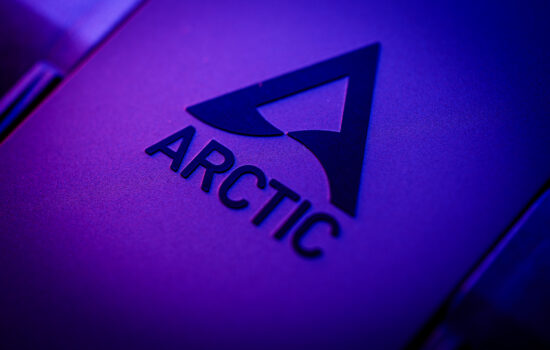Conclusion
Alpine coolers are always cheap and are sold at prices below ten euros. Active models with fans can be seen as simple replacements for box coolers. However, while Intel has vastly improved the coolers supplied with Alder Lake CPUs between generations, the biggest change with the new Alpine 17 is the added LGA 1700 support. The difference in cooling performance over the Laminar RM1 has thus narrowed considerably.
Conclusion
The Alpine 17 (CO) no longer has the edge over box coolers that the Alpine 12 had over the contemporary LGA 115x/1200 coolers. Compared to these, the Alpine 17 has at least a 9°C advantage in the optimum setting at lower speeds. With the cheaper variants without a copper core, the difference will be even greater.
Compared to the Laminar RM1, however, the Alpine 17 doesn’t excel as much.
It’s still more effective, but the temperature is only 2–3°C lower. And this in the upper speed range, i.e. at higher noise levels. At a noise level that corresponds to the 42 dBA measured by our methodology, the cooling performance is already the same. As the RPM decreases, the thermal performance reverses and with very low noise levels, where the Alpine 17 CO didn’t even make the results, the Laminar RM1 is more powerful because it has a full aluminium core, unlike the Alpine 17, at which level the heat transfer is considerably faster. But even so, the thermal performance is practically even, and that’s probably also important for the Alpine 17. While there are signs of stagnation in its design, it’s still a capable replacement to work with.
If you find the bundled Intel cooler noisy, the Alpine 17 won’t help you, but if you’re comfortable with its features and need to replace it for other reasons (typically due to a failure), the Arctic cooler will still do a good job.
Because of its low price, the Alpine 17 (CO) could also be attractive as an option for Celeron, Pentium and Core i3–Core i7 processors, which can be purchased without the Laminar cooler. This may be interesting, however, only for large computer manufacturers, who may be affected by quantity discounts. After all, CPU bundles with coolers are only 6–7 euros more expensive, and you can’t buy Alpine 17 in retail below 8 euros. The CO variant of the Alpine 17 cooler then starts at 9 euros. Apart from cooling performance, its choice might be better for the more robust ball bearings that are less dependent on lubricant. But that’s just a theory, it’s hard to guess how good the Laminar RM1 bearings are, Intel doesn’t brag about the parameters around them in the specs. Judging by the nature of the sound, it will probably be a plain type.
The Arctic Alpine 17 CO cooler passed our tests without any flaws, the fan is also quiet. However, regulation to the quietest mode with a fixed 31 dBA failed due to a slight rustling from mechanical movement. But that’s the case with the Laminar RM1 as well. Operation blended with the passive mode for idle running is to be sought in higher price ranges.
English translation and edit by Jozef Dudáš
| Arctic Alpine 17 CO |
| + Very low price |
| + Decent replacement for Laminar RM1 and RS1 box cooler |
| + At higher speeds, higher cooling performance than the Intel Laminar RM1 and RS1 |
| + Quick and easy mounting |
| + Lighter weight (also compared to Laminar RM1), more safety during transportation. Especially with these push-pin systems |
| + Ball bearings, assumption of high durability |
| - At low speeds, cooling efficiency ends up below that of the Intel Laminar RM1 |
| - With a height of 66 mm, it does not fit into slimmer cases |
| - You can't just replace the fan in case of failure, non-standardized system |
| Approximate retail price: 9 EUR |
- Contents
- The Arctic Alpine 17 CO cooler in detail
- Results: Higher performance (42+ dBA)
- Results: Lower noise (31–39 dBA)
- Conclusion













I am searching for a budget cooler, to replace the noisy stock Intel cooler. And after the article read I found that the Alpine 15 CO won’t make difference at noise levels difference (from what it says in the review) can you tell me a budge & simple cpu cooler with a good low noise?
I don’t use the PC hardly, and I only play soft games. No overcloking. It 12400F.
I APPRECIATE any tips, for low budget coolers with low noise levels. I can’t stand the stock Intel fan noise anymore, and I only have this Pc at 2weeks.
Do you have any height restrictions? If not, there is the Spartan 5 (EY3A001, model with two heatpipes). It’s cheap and for Ci5-12400 has sufficient cooling performance even at very low/quiet speeds. But if you need a low-profile cooler that is more effective than the Laminar RM1, it will be more complicated. Especially if it has to be cheap at the same time.
Have you tried to adjust the PWM control curve of the Laminar RM1 with respect to quieter operation? Maybe the control is more aggressive than it could be. According to our findings, the cooling performance of Laminar RM1 on Ci5-12400 is sufficient even at lower speeds, as long as the processor is not operated at maximum performance without power supply limits (at 95 W). With power limitation according to PL/TDP limits (to 65 W) or in gaming load (where the power draw is always to 60 W), Laminar RM1 with lower speed will be sufficient even in a case with average airflow. Unless you are working in an environment with excessive ambient air temperature. 🙂